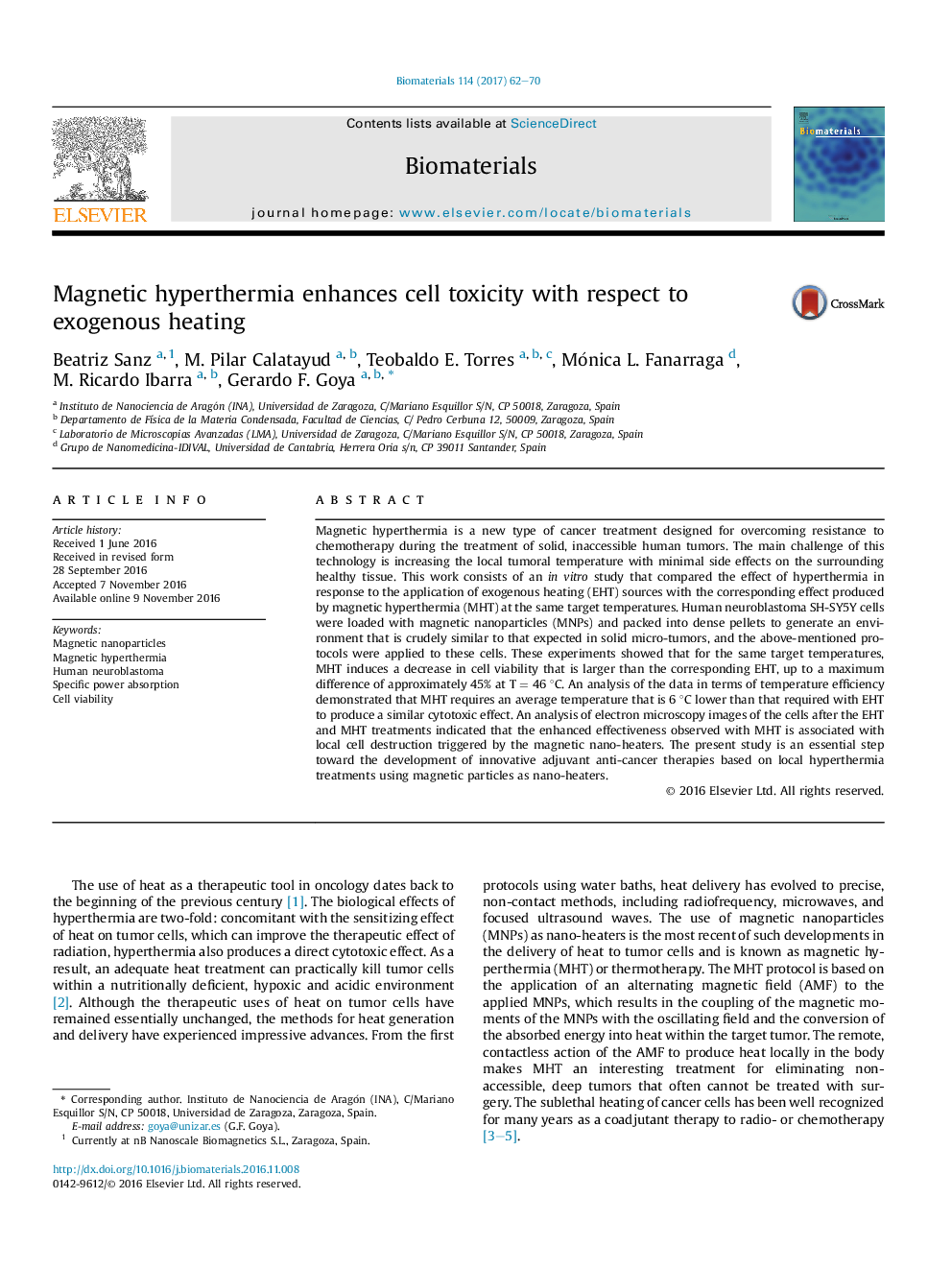| Article ID | Journal | Published Year | Pages | File Type |
|---|---|---|---|---|
| 6451017 | Biomaterials | 2017 | 9 Pages |
Magnetic hyperthermia is a new type of cancer treatment designed for overcoming resistance to chemotherapy during the treatment of solid, inaccessible human tumors. The main challenge of this technology is increasing the local tumoral temperature with minimal side effects on the surrounding healthy tissue. This work consists of an in vitro study that compared the effect of hyperthermia in response to the application of exogenous heating (EHT) sources with the corresponding effect produced by magnetic hyperthermia (MHT) at the same target temperatures. Human neuroblastoma SH-SY5Y cells were loaded with magnetic nanoparticles (MNPs) and packed into dense pellets to generate an environment that is crudely similar to that expected in solid micro-tumors, and the above-mentioned protocols were applied to these cells. These experiments showed that for the same target temperatures, MHT induces a decrease in cell viability that is larger than the corresponding EHT, up to a maximum difference of approximately 45% at T = 46 °C. An analysis of the data in terms of temperature efficiency demonstrated that MHT requires an average temperature that is 6 °C lower than that required with EHT to produce a similar cytotoxic effect. An analysis of electron microscopy images of the cells after the EHT and MHT treatments indicated that the enhanced effectiveness observed with MHT is associated with local cell destruction triggered by the magnetic nano-heaters. The present study is an essential step toward the development of innovative adjuvant anti-cancer therapies based on local hyperthermia treatments using magnetic particles as nano-heaters.
Graphical abstractDownload high-res image (338KB)Download full-size image
